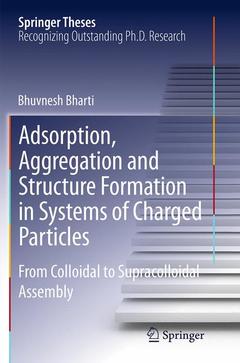Description
Adsorption, Aggregation and Structure Formation in Systems of Charged Particles, 2014
From Colloidal to Supracolloidal Assembly
Springer Theses Series
Author: Bharti Bhuvnesh
Language: English
Subjects for Adsorption, Aggregation and Structure Formation in...:
Publication date: 09-2016
Support: Print on demand
Approximative price 105.49 €
In Print (Delivery period: 15 days).
Add to cartPublication date: 07-2014
150 p. · 15.5x23.5 cm · Hardback
Description
/li>Contents
/li>Biography
/li>Comment
/li>
Nominated as an Outstanding Ph.D. thesis by Technical University of Berlin, Germany
An interdisciplinary approach towards nanoscience and nanotechnology
A compilation combining fundamentals with advanced research and correlating experiments with theory
An in-depth insight into the fascinating world of colloids
Includes supplementary material: sn.pub/extras




